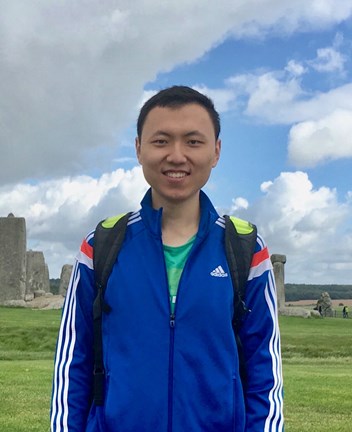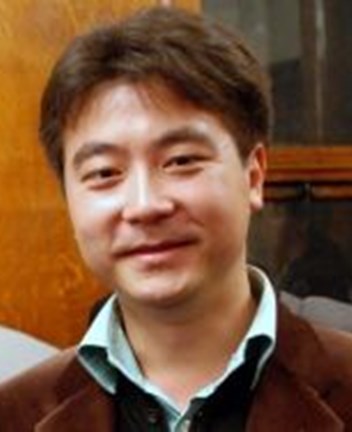Strain sensors, or pressure transducers, find a variety of applications in automotive, aerospace, and other industries. For example, in automotive technology, strain sensors can be used in aerodynamics, air bag systems, brake pressure, engine oil pressure, exhaust system testing, and fuel pressure. In the field of aircraft, strain sensors can be used to monitor the reaction control system. Moreover, pressure sensors can be adapted to measure forces or structural vibration and act as electrical switch in cranes and earthmovers. Current strain sensors suffer from various drawbacks such as poor thermal stability, low sensitivity, poor chemical inertness, high complexity of the required readout circuit, and high cost. The aim of the project is to develop a novel type strain sensor by combining the best semiconducting diamond, ferroelectrics with high Curie temperature, and MEMS technology. The proposed diamond sensors can advance safety, especially for applications in hostile environments (high temperature, corrosive chemical, nuclear radiation). High-sensitivity pressure sensors based on diamond MEMS technology have never been reported. The challenges lie in mainly three aspects: (i) No available device concept on semiconductor diamond has been proposed for this aim; (ii) The fabrication of free-standing single crystal diamond cantilevers is a challenge; (iii) The integration of ferroelectrics on diamond has never been studied. Therefore, the concept of the diamond-ferroelectrics pressure sensor is completely novel, which will lead to a new detection technique for diamond MEMS sensors. On the other hand, diamond shows the best mechanical hardness, Young’s modulus, the highest thermal conductivity, and the highest electron and hole mobility among the next generation wide-bandgap semiconductors.
This proposal combines the excellent mechanical, thermal and electronic properties of diamond for the multifunctional device with high bandwidth. The practical application of the diamond pressure sensor at high temperatures in hostile environments is expected to open up an avenue for diamond MEMS. The proposed device offers high-temperature and high-sensitivity operation within a simple device structure. At the same time, we will establish a novel MEMS field based on diamond and ferroelectrics with unprecedented performance. The fundamental science such as the physical properties of the interfaces between diamond and piezoelectric material, resonant properties of the diamond MEMS cantilevers, and the basic device properties will also be investigated. The target is to achieve a high strain factor of 100 (100 times of metal gauge, 10 times of Si piezoresistance) and a high-temperature (>400oC) pressure sensing. The student will have a unique opportunity on secondment to the world-leading Oak Ridge National Labs for access to the environmental characterization facilities there. Matched funding to this project will be provided by Aston University and ORNL.

Dongyu Li was born in Benxi, Liaoning. Dongyu studied as a chemical engineer at the East China University of Science and Technology (ECUST), and was awarded a BEng degree certificate in 2017. Dongyu then joined the University of Bath obtaining a Masters in Sustainable Chemical Engineering in 2018. In January 2019, Dongyu started his PhD research under the supervision of Professor Haitao Ye in the Mechanics of Materials Research Group in the University of Leicester. In May 2016, Dongyu was awarded the Excellent paper on the 14th USRP Innovation Practice by the Academic Affairs Office of ECUST. In October 2017, Dongyu was awarded the International Scholarship for the year 2017/2018 by Dame Glynis Breakwell, the Vice-Chancellor of the University of Bath.
Dongyu is especially interested in the combination of experiments and simulations. During his BEng in ECUST, he determined the vapor-liquid equilibrium data of the ethylene oxide-formaldehyde-acetaldehyde system and studied the thermodynamic correlation method. He realized experiments are so limited without the simulations’ assistance. So during his Masters study at the University of Bath, he carried out Grand Canonical Monte Carlo (GCMC) simulations of C3H8 & C3H6 adsorption in a series of potential Metal-Organic Frameworks (MOFs). And he is planning to take his experience and knowledge in both molecular simulations and research experiments to his PhD research: the Diamond Based Thin Films & Devices, and wish to make a breakthrough in this field.

Dr Haitao Ye received his PhD from University College London. He is now a Reader in Nanotechnology Science at Aston University. His research focuses on diamond nanomaterials for photonics, aerospace, energy and biomedical application. He has strong research activities in diamond nanostructures and devices for harsh environments.

Dr. Ilia N. Ivanov will be the co-supervisor to the PhD project. Dr Ivanov is a research scientist at the Centre for Nanophase Materials Sciences, Oak Ridge National Laboratory, Distinguished Battelle Inventor, having 18+ patents issued and pending. Dr Ivanov has high impact publications in journals including Nature Communications, Nano letters, Nanoscale, Carbon. Of particular relevance to this proposal is his expertise in the unique in-situ and environmental characterization facilities, which could provide in-depth understanding on the materials developed and devices fabricated.